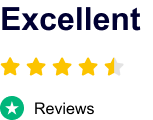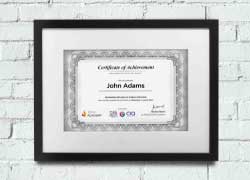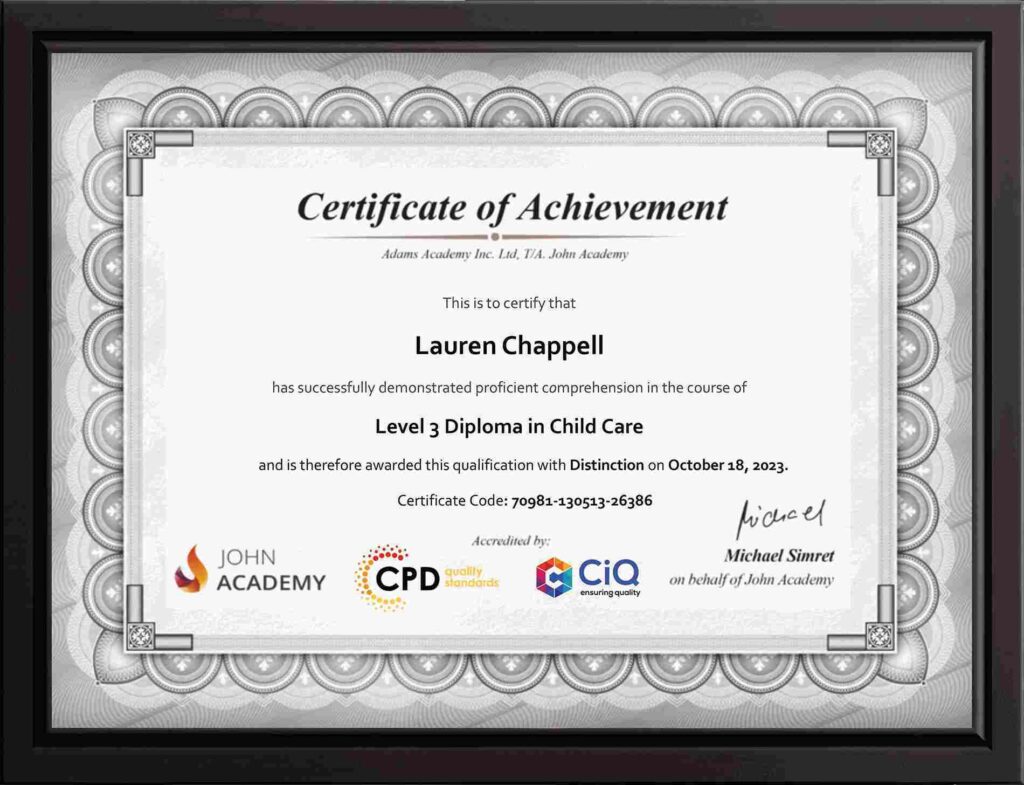
For modern businesses, business agility has become the foremost priority across various industries. Staying ahead of the competition is essential for maintaining a thriving and consistently successful enterprise. This heightened competition has led to an urgent and rapid demand for scaling Agile methodologies throughout organizational infrastructure, surpassing the limitations of small Agile teams.
As businesses aspire to imbue every level of their structure with Business Agility, the Scaled Agile Framework (SAFe) emerges as a knowledge repository uniquely suited to facilitate this transformative journey. SAFe for lean enterprises seamlessly integrates principles of Agile, Lean, and DevOps, providing a holistic approach to achieving organizational agility. This is where the role of SAFe Agilist Certification comes into the picture.
In a world that undergoes daily evolution, I have seen that businesses no longer rely solely on SAFe-trained professionals; certification has become a prerequisite. This brings us to the crucial question: should one opt for the Leading SAFe or the SAFe Scrum Master? To help you choose, I will first explain what Leading SAFe and SAFe Scrum Master are, what they offer, and how these options fit into your career goals.
What is Leading SAFe?
Leading SAFe® presents an overview of SAFe’s underpinnings as well as the ideas and techniques you need to drive your Lean-Agile transformation successfully. The training and certification provide you with the direction and resources you need to create a resilient culture and a shared language that engages people and focuses on customers, allowing businesses to function with agility on a large scale. Here are some aspects that you must consider in my opinion.
Elements of SAFe Leadership
- Leading SAFe lays a major focus on leadership roles and duties. It is intended for leaders, managers, and Agile change agents to drive organizational transformation.
- The certification covers the concepts of Lean and Agile processes, offering a thorough grasp of how these notions can be effectively applied at scale.
- Organizational transformation discusses ideas and practices for managing organizational transformation. Participants will learn how to drive the transition, adopt Lean-Agile attitudes, and cultivate a culture of continuous improvement.
- The course also covers developing and maintaining an Agile portfolio, ensuring alignment with strategic goals and maximizing value delivery.
Leading SAFe® Certification Benefits
- Global Recognition: Globally acknowledged certification for enhanced career mobility.
- Market Value: Elevates market value, leading to higher salary opportunities.
- Expert Training: Delivered by SAFe® Program Consultants, providing insights into industry experts.
- Job Opportunities: Open doors in top companies with SAFe® certification.
- Foundation for Learning: Serves as a foundational step for further exploration of Scaled Agile Frameworks.
- Community Membership: One-year membership with the Scaled Agile Community for networking and ongoing learning.
- Value to Organization: Adds significant value to the employing organization by contributing to effective Agile implementation.
What is a SAFe Scrum Master?
SAFe Scrum Master is a certification course designed for scrum masters, agile coaches, and practitioners who lead Agile techniques inside their organizations. The course teaches students how to lead Agile teams that deliver commercial value at scale. The course will teach you the tactical skills required to be an effective Scrum Master in a SAFe organization, as well as give guidance and resources to facilitate remote collaboration with distant teams.
Elements of SAFe Scrum Master
- The course offers an understanding of the foundational principles that drive the SAFe framework.
- Practical guidance on implementing SAFe practices within Agile teams.
- In-depth exploration of the roles and responsibilities critical to successful SAFe adoption.
- Developing the necessary skills to navigate the challenges of introducing SAFe at the team level.
SAFe® Scrum Master Certification Benefits
- Versatility: Enables Scrum Master roles at both team and enterprise levels.
- Community Access: One-year membership with access to the Scaled Agile Inc. Community platform.
- Scaling Scrum: Knowledge to scale Scrum methodologies across the enterprise.
- Problem Solving: Expertise in solving real-world issues using SAFe® principles.
- Maximizing Outputs: Drives maximum outputs for organizations implementing Scaled Agile Framework.
- Agile Mindset: Develop an Agile mindset for effective Lean-Agile implementation.
- Career Expansion: Opportunities for career expansion by managing large teams and implementing Agile methodologies.
Difference between Leading SAFe & SAFe Scrum Master
| Parameter | Leading SAFe | SAFe Scrum Master |
| Accreditation Body | Accredited by Scaled Agile, Inc. | Accredited by Scaled Agile, Inc. |
| Topics Covered | Overview of SAFe principles and Lean-Agile mindset Applying Lean and Agile principles at scale Agile release trains (ARTs) and PI planning Lean portfolio management Leading change to a Lean-Agile enterprise | Introduction to Scrum in SAFe Characteristics of a Scrum Master Program increment planning Facilitating iteration execution PI planning completion Business agility in the digital age Becoming a lean-agile leader Establishing technical and team agility Agile product delivery Lean portfolio management Leading change |
| Eligibility/Prerequisites | Recommended knowledge of Scrum. 5+ years of work experience in Agile product development, business analysis, and software testing | Knowledge of software and hardware development processes Prior understanding of Scrum, XP, and Kanban practices Familiarity with Agile concepts and principles |
| Certification Level | Foundation | Intermediate |
| Role and Responsibilities | Strategic leadership for Agile transformation Cultural change advocate Application of Lean-Agile principles at scale | Facilitating Agile practices at the team level Executing Program Increments (PIs)Guiding Scrum practices within the SAFe framework |
| Exam Details | 45 Multiple Choice Questions Web-based test Passing score: 35 correct answers (77%) | 45 Multiple Choice Questions Web-based test Passing score: 33 correct answers (73%). |
| Exam Study Materials | SAFe Community Platform resources Downloadable course materials Study guide covering SAFe Agilist role Practice test available on Learning Plan | Course materials are downloadable from the SAFe Community. A study guide covering the Scrum Master role. Access to practice tests. |
| Renewal | Annual renewal required | Annual renewal required |
| Career Implications | Positions for strategic leadership roles Ideal for executives, managers, and leaders seeking to lead organizational change | Positions for scrum masters, agile coaches, and team facilitators Suitable for those focusing on team-level execution within the SAFe framework |
Choosing the Right SAFe Certification: Factors to Consider
Choosing the appropriate Scaled Agile Framework certification, popularly known as SAFe agilist certification, is critical for individuals and businesses wishing to implement agile approaches at scale. Two well-known certifications, Leading SAFe (SAFe Agilist) and SAFe Scrum Master, cater to various roles within the SAFe architecture. Making an ideal option requires evaluating various factors, which are:
1. Foundations vs. Team-Level Proficiency
Leading SAFe (SAFe Agilist)
Objective: Establishing SAFe foundations and principles, driving Lean-Agile transformation throughout the enterprise.
Skills Acquired: Strategic leadership skills, understanding business Agility, executing SAFe events like PI Planning, and aligning organizations with Agile principles.
Focus: Scaling Agility at an organizational level.
SAFe Scrum Master
Objective: Enhancing team-level proficiency, mentoring teams in SAFe ScrumXP, and implementing SAFe principles.
Skills Acquired: Proficiency in Scrum, Kanban, Extreme Programming, and SAFe, with a focus on team-level execution.
Focus: Enabling teams to achieve goals and targets.
2. Remote Leadership vs. Team Facilitation
Leading SAFe (SAFe Agilist)
Scenario: Equips Agilists to lead teams, especially in remote environments.
Relevance: Particularly useful in the post-pandemic era with an emphasis on remote team leadership.
SAFe Scrum Master
Scenario: Primarily focused on facilitating teams and ensuring the flow of value.
Relevance: There is a high demand for Scrum Masters with proficiency in SAFe ScrumXP and team-level execution.
3. Global Engagement vs. Team-Level Impact
Leading SAFe (SAFe Agilist)
Engagement: Global engagement with the SAFe community, contributing to enterprise-level improvements.
Impact: Strategic alignment, quality improvement, and productivity enhancements at an organizational scale.
SAFe Scrum Master
Engagement: Collaboration with the global Scrum Master community, working with experts like release and solution train engineers.
Impact: Direct impact on team-level execution, removing roadblocks, and fostering Agile processes.
4. Career Trajectory and Skill Enhancement
Leading SAFe (SAFe Agilist)
Career Path: Positions you for leadership roles driving Lean-Agile transformations.
Skill Enhancement: Strategic leadership, cultural change management, and aligning organizations with Agile principles.
SAFe Scrum Master
Career Path: Suits those aspiring to excel in team-level Scrum Master and Agile coaching roles.
Skill Enhancement: Proficiency in Scrum, SAFe ScrumXP, and team-level facilitation.
Conclusion
The decision between becoming a SAFe Agilist or a SAFe Scrum Master is based on matching certification options to your career goals and corporate environment. Leading SAFe opens opportunities for strategic leadership roles, affecting cultural change at the organizational level. SAFe Scrum Master, on the other hand, emphasizes team-level execution while promoting Agile techniques within a SAFe framework.
Both courses considerably improve an individual’s SAFe competency by providing relevant insights customized to various organizational positions. Choosing the appropriate course is determined by the professional’s role and the extent of involvement in adopting SAFe techniques. Finally, a comprehensive strategy that blends strategic vision with operational excellence is critical for firms seeking to prosper in the changing Agile techniques. Whether one chooses the Leading SAFe or SAFe Scrum Master certification, the purpose is to promote an agile culture that enables firms to adapt, innovate, and succeed in an ever-changing business environment.
Elevate your career with KnowledgeHut’s SAFe Agilist Certification course. Gain strategic leadership skills, drive Lean-Agile transformations, and become a certified SAFe Agilist. Unlock global opportunities and contribute to organizational success. Enrol now to lead the way in Agile transformations!
FAQs
The most advanced SAFe certification is the SAFe® Practice Consultant-Trainer (SPCT). This certification is intended for those who have demonstrated excellent knowledge, proficiency, and considerable field experience implementing Agile principles across an entire company utilizing the Scaled Agile Framework® (SAFe).
The Leading SAFe certification is well-suited for executives, senior managers, quality analysts, directors, VPs, program and project managers, product managers, portfolio managers, process and enterprise architects, and solution architects. The certification caters to individuals across various roles who play key roles in driving Agile transformations within their organizations.
The Leading SAFe and SAFe for Teams certificates fulfill different functions within the Scaled Agile Framework (SAFe).
Leading SAFe is intended for executives, senior managers, quality analysts, directors, vice presidents, program and project managers, product managers, portfolio managers, process and enterprise architects, and solution architects. This certification is appropriate for strategic planning and driving cultural change to ensure an effective Agile transformation at all levels of a business.
SAFe for Teams is a certification for professionals who work in big corporate teams. It focuses on giving a foundational grasp of the SAFe framework, with the goal of unifying big and complicated teams for rapid learning, increased communication, and higher job performance.




